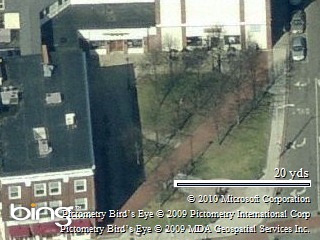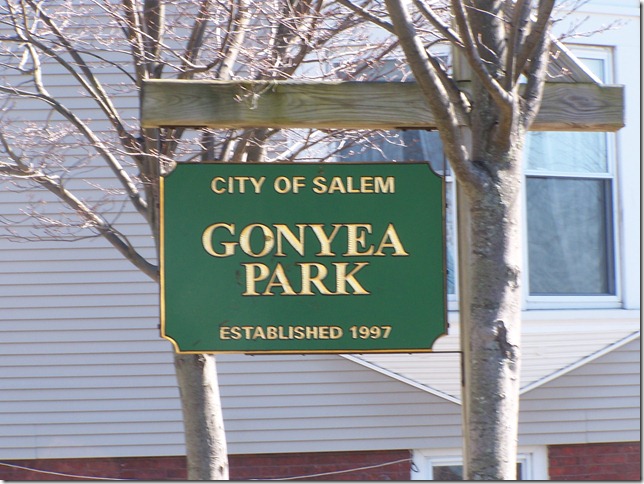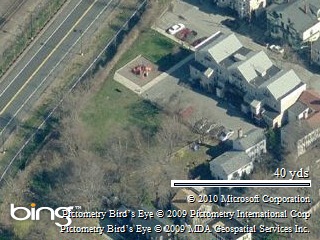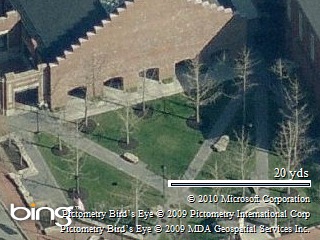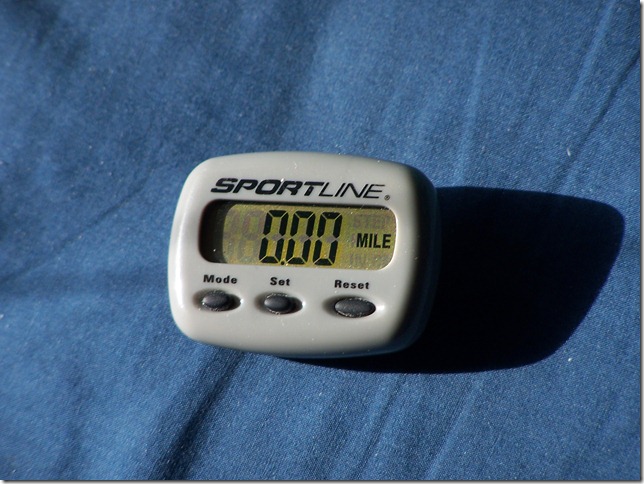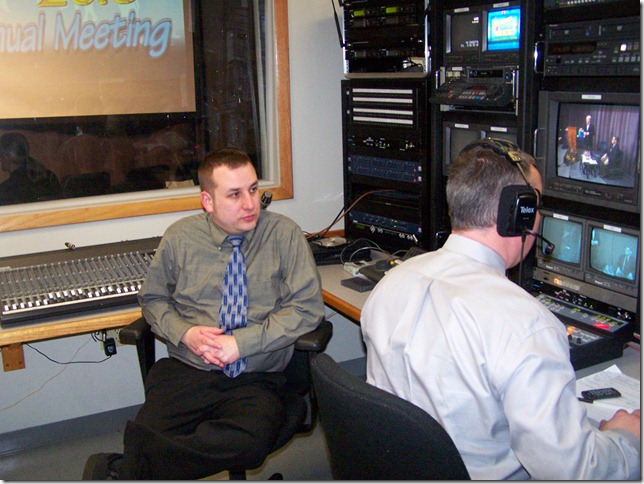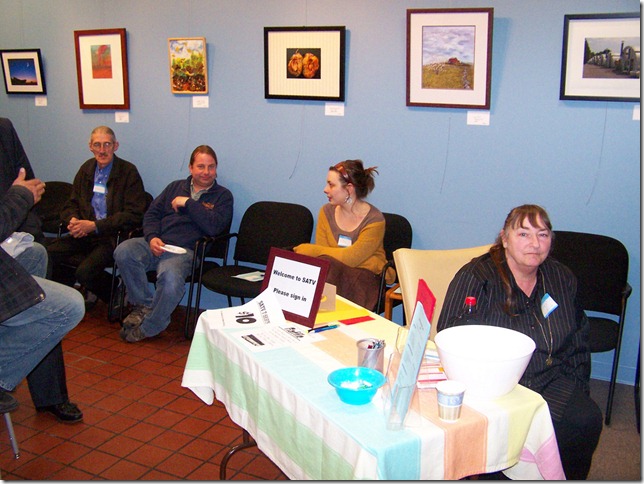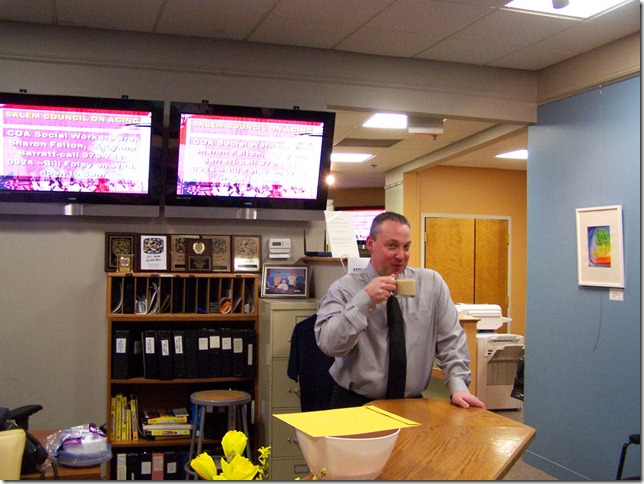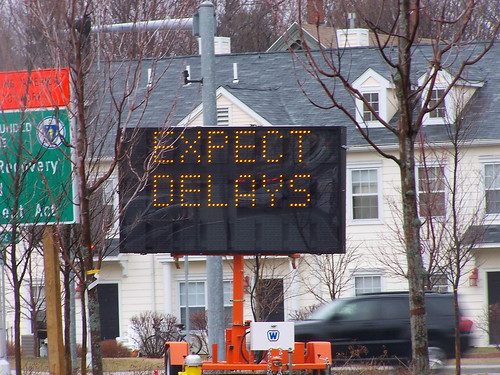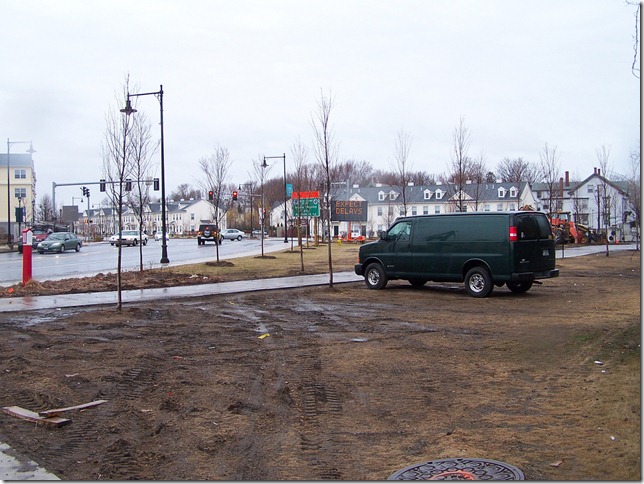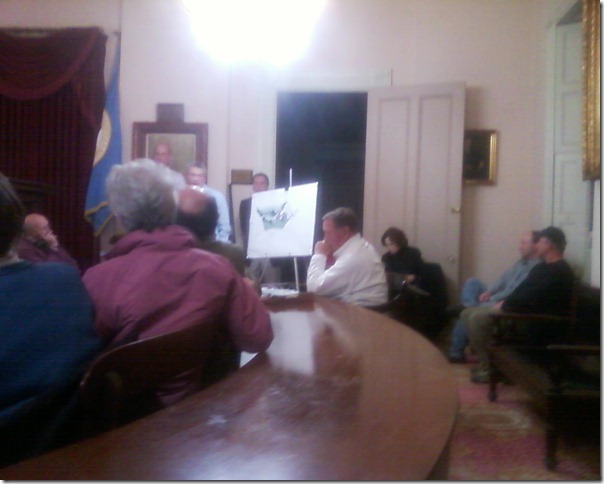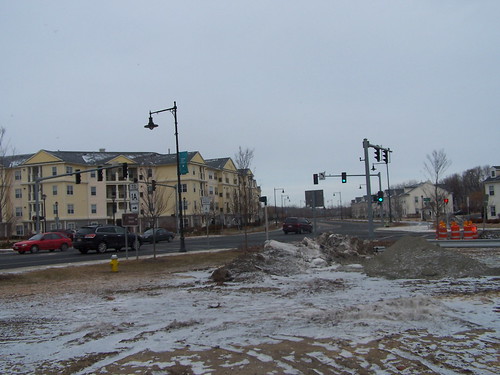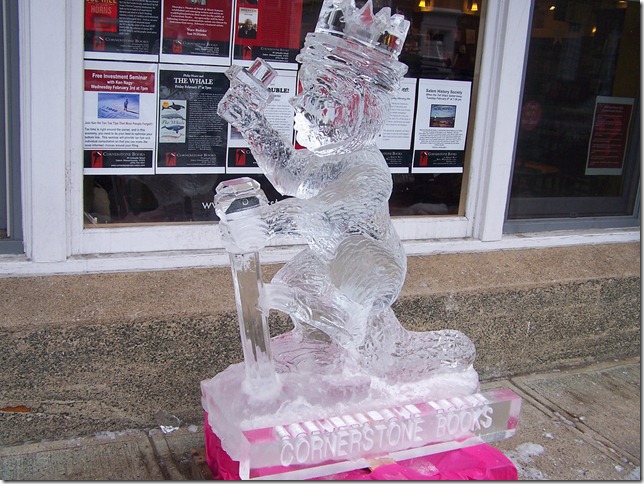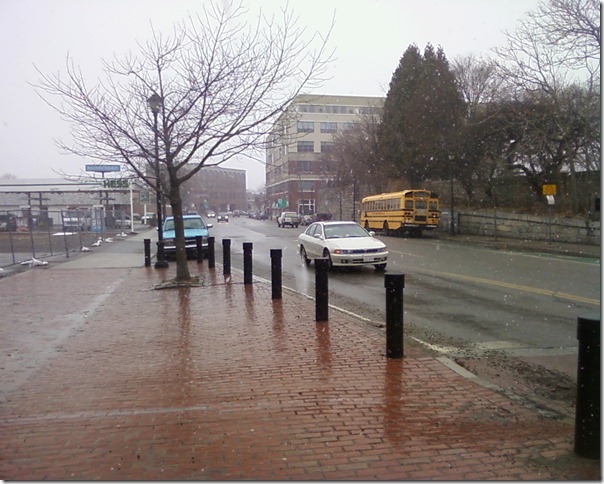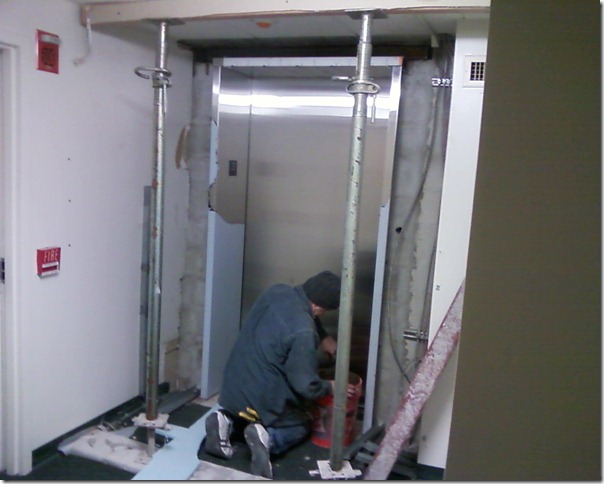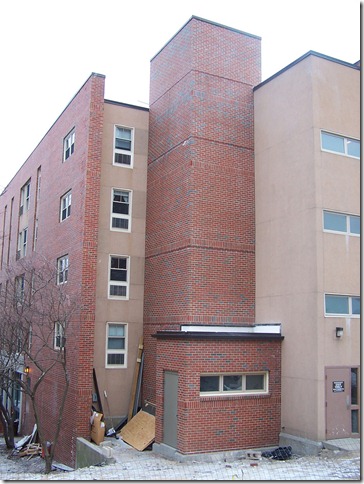
Salem Commission on Disabilities
Minutes for March 22, 2010
Monday, March 22, 2010
The Salem Commission on Disabilities met at scheduled at 4 PM in the SATV conference room
Jean Levesque and Andy LaPointe will not be present.
Present were Lisa Cammarata, Human Resources (in Jean’s place), Jack Harris, Co-chair, David Tracht, David Moisan, Mike Taylor, Charlie Reardon, Co-chair, Debra Lobsitz, Jean Harrison, and Mike Sosnowski, Council liaison.
Jack: Meg Robertson from the Massachusetts Commission of the Blind called in sick and could not show for her presentation.
Capt. John Jodoin of the Salem PD is here to discuss the Right on Red law and how it affects pedestrians and people with disabilities. He’s going to talk about my “favorite” intersection, Riley Plaza.
Capt. Jodoin: History. Massachusetts passed the Right on Red law in 1980's in response to the (ongoing) energy crisis. We have the law but we apply it differently from every other state.
All other states allow right on red unless posted. We don’t allow right on red unless it is posted at individual intersections.
Crosswalk signals are not good for people with disabilities who often have to wait several cycles to cross the street.
The timespan for pedestrian crossing is very short; the normal way we evaluate an intersection is how quickly it can move traffic. But it must be able to allow pedestrians to move safely. This conflicts.
Many times, I’m in my car [cruiser] watching a disabled person try to cross and I pull over the car, get out, and make the traffic stop to let the person cross.
David Martel: How are seatbelt fines assess?
Capt. Jodoin: Seatbelt fines are tacked on to whatever other fines we assess. We have a course on brain injury that we have motorcyclists we find without helmets take.
You can count on Massachusetts to take federal law and interpret it in its own special way.
Jack: Right on red? Is it option for the driver?
Capt. Jodoin: No, not if the intersection is signed for no turn on red. It’s very confusing, especially the intersection near the post office. It’s marked so cars can’t block it, but even if there were a machine gun nest were there, people still do.
Capt. Jodoin: The state gets interested since it is a state route (1A and 114). We would have preferred two four-way intersections there, but the current Riley Plaza is still much safer than before.
Jack: That’s what Meg would have brought up. We have audible signals, but with right on red, how does the blind person know?
Capt. Jodoin: They don’t. That’s the problem. It’s a confusing mess and we don’t have an answer. We would have liked to have an overpass there.
Jack: How is the intersection [Wash. And Derby] accident stats?
Capt. Jodoin: Don't know. Don’t have figures but since Riley Plaza removal it is much better. Before the redesign there was at least one fatality every year.
Ultimately, the pedestrian is the controller. If he or she is in the crosswalk they have the right of way regardless if the driver has right on red.
Jack: Have we been told that? From blind community: "I'm in the crosswalk…but will traffic stay still for me?"
David Tracht: My problem, many of the crosswalks are not painted well. It’s especially bad in the morning and evening with the sun.
Capt. Jodoin.: Yearly ritual. We put down the hot markings, but they are destroyed by plows. It's New England. No good marking.
Jack: Cambridge has lighted crosswalks. How does it work?
Capt. Jodoin: The state is asking for the laws to be changed to allow stop light cameras. Right now an officer needs to monitor the camera at all times. They could also be used for pedestrian incidents.
Automated cameras take pictures of cars violating the red light, take a picture of the car again in the intersection, and another camera takes pictures of the plate.
Camera has a computer processor; if there's an amber alert or a BOLO and plate camera finds a match, it alerts.
Riley Plaza is ideal--it is the biggest longest intersection in Salem that pedestrians have to cross.
Jack: Other cities and towns, are they getting involved?
Capt. Jodoin: Yes. Unfortunately, the camera can only do one thing at a time, Amber Alerts or red-light violations. A person is still at police headquarters looking at the images to determine if there are real violations.
Jack: You have a yellow light, say. When does the violation start in the intersection?
Capt. Jodoin: The light has to be red when the vehicle crosses the stop line for it to be a violation. But, Massachusetts has a twist: If you see a yellow, you are supposed to treat it as a stop sign.
Jack: There was a news story recently, a lot of MBTA buses don’t obey the signals. Does this apply to state vehicles (MBTA)?
Capt. Jodoin: Sole discretion for determining violations is with the officer. It doesn’t matter whether it’s an MBTA vehicle or not.
Jack: I’d heard of a lot of violations re MBTA. Do you remember any?
Capt. Jodoin: A bus was coming in early in the morning, in Riley Plaza of all places, and it was 5 degrees out, and the bus’s brakes were frozen. They hit someone at Dunkin Donuts and kept going over the curb into the Riley Plaza parking lot itself. That’s the only instance I remember.
Capt. Jodoin: We have to follow what the will of the community is. An ironclad rule we follow: Enforcement is not a way to generate capital, but to insure safety.
The Commission could do an announcement, PSA, etc., on pedestrian safety. Like the one done for school kids, etc. We had cones on crosswalks reminding people to stop.
Jack: Remember those lime-green kid-shaped cutouts in Peabody that neighborhoods would put in the road? Those were controversial.
Capt. Jodoin: We could put a thousand of those. Anything that makes people stop, we’ll use.
We have another vehicle speed display we got used from the Avon police.
Jack: John has been a huge friend to the Commission and to the City of Salem and has served the Commission very well. I’m proud and humbled to say he’s been an excellent resource to us and the police department. I’m highly pleased with the expertise of not only the police department but also with the expertise of individual officers who have shown great sensitivity to people with disabilities.
Capt. Jodoin: You need to make more public service announcement videos and notices on the [SATV] bulletin board.
Jack: I remember hearing about a program where there were posters in businesses where kids in trouble could go into and get help. Don’t know what came of it but it could be done in conjunction with Project Lifesafer.
Capt. Jodoin: Project Lifesaver is Lojack for people. In fact, Lojack bought the company. [Project Lifesaver is an independent nonprofit.] Because our program is named and modeled after the national program, they don’t charge the city for the equipment.
Andy got us $3000 to get started.
Person wears small device (like a gps bracelet).
2200 saves nationwide.
Average find time: 30 minutes.
100% success—everybody’s been found.
It cost us $3,000 for the startup and training [that we got from Andy].
We have one application so far.
Cost to the users is $99 to start up and $30 per month.
The bracelet is made of tough nylon that’s hard for the wearer to remove. It’s not a problem for Alzheimer’s patients but many autistics can’t stand the feel of it—they get sensory overload.
A few years ago, we had an Alzheimer’s patient wander off. We found the guy but we were about to get extra officers from out of town to help. Fortunately, it was during the summer. And the guy was found near his house in a vacant apartment.
For some strange reason, many Alzheimer’s patients go to the water.
We find them with the system with two radios, and find the nearest body of water. And narrow down the search that way.
David Tracht: The nursing homes with Alzheimer’s patients could use it; have they been approached?
Capt. Jodoin: Yes. A word about funding. A charitable account is being set up by city for people in need of it.
We’re trying to get it covered with Homeland Security money. Boston is signing up in the spring.
It’s a completely portable system. We can drive around in the car with the system, and then get out of the car and use our hand-held antennas to continue on foot.
Project Lifesaver is a win-win! We have over a hundred applications out there!
Jack: Woman in Waltham who went into the bank, left, and apparently died. If she had had something like that on her, perhaps she could have been found sooner.
Capt. Jodoin: It’s a great program.
If someone has the system, and passes away, the family can donate the bracelet to the city and it will be available.
Jack: It works with another program, Are You OK?, that the senior center runs. I think with the Salem PD putting these programs in place, we make the city more attractive, doing what we need
Capt. Jodoin: I was the least involved with the startup. Andy has done all the legwork and he and Friends of the Council on Aging have been great!
You can call Andy if you have any questions about the program; he’s done more than anyone else to get it going.
A search can cost $50,000 per hour, so this can save money as well as time.
Jack: It does put people at risk when you perform searches.
MBTA Garage update:
We won a victory at the 30% Design meeting: There will be a full-height platform. Next push: Covered platform. Security: Cameras would be in the new garage. I asked the head of security there if they would be working with the Salem PD? I got the standard answer (“oh, yes, of course.”), but I am going to ask the mayor's office for sitdown between T and SPD and ask for cameras in the new garage so that our technologies and the T’s are integrated. The cameras the captain is talking about may be similar to the ones the T will use.
Jean H.: I have a question about the 911 Indicator form? Can the homebound disabled fill out the form?
Capt. Jodoin: Yes. Call and tell the dispatcher. We processed 20-50 forms this week. [SATV produced and is airing a PSA on the indicator form.]
If someone indicates they are mobility-impaired, deaf/HoH, blind, allergic--puts a code on the dispatch form for that address.
Lisa C.: Promotion ran in Salem Gazette and Salem News.
Capt. Jodoin: Disabled people don't like to wave the flag. We got 20-30% of the forms returned. But it is voluntary and confidential. It’s all under your control.
Jean H.: It’s ironic the forms are at City Hall—on the fourth floor!
Lisa C.: Form (In PDF) is available on the city website (salem.com) on the Commission page amongst others.
Mike S.: Can it be filled out online?
Capt. Jodoin: No. It can’t be done on line; we must verify the address. It is a state form. It can’t be submitted electronically for that reason (at least not by the city itself.) I maintain the master file and have to change it constantly. We have several “0” addresses that front onto other streets.
Jack: A few days ago, a fire in Dorchester. Brother and sister. Sister was bedridden on 2nd floor (and the brother died too). How would the 911 indicator have helped? Are the forms specific?
Capt. Jodoin: No, it’s not that detailed. Computer screen is small and not enough room for detailed information. The dispatcher display will come up with the information on the owner of the telephone not necessarily person with disabilities.
Jack: Many people are giving up their landlines, which are in the E911 system. Cellphones connect to the state PD with 911. Are cellphones supported with this?
Capt. Jodoin: We’re making progress. Eventually, cellphones will be in the same system. We can track phones by 10-mile circles around cell towers now, but are hoping for it to be in the block level someday.
Jack: Peabody woman who ended up in a lake comes to mind.
Capt. Jodoin: She made a last minute phone call saying she was in the water. We narrowed it down to the cell tower but there were about 5 or 7 lakes in the area. We sent a dive team.
On the second search dive, we had a side-scanning sonar paid for by the family. We found an old rusted car, not much more than four tires and a mound of rust. But we found a second object, dropped an anchor and sent in a diver. It was the car and the woman.
Jack: It demonstrates the fact that our police department is involved in a lot of things and I am proud of that. We need to support them in any way we can. Including the new chief, who is doing a great job.
Capt. Jodoin: We ran after one guy once, we chased him to a marina and he’s hugging the piers. Bob St. Pierre (the Chief) was yelling at the guy and pointing his gun. And he was in his civilian clothes!
Jack: He’s on the Licensing Board now. It shows his dedication in not wanting to be idle.
Charlie: The Citizen’s Academy program: Will that come back?
Capt. Jodoin: It’s all about money. We are flatlined in the budget. We had a program at SATV, “Behind the Badge” which was great and won national awards. But we were shorthanded and didn’t have the funds to continue.
We had a program for sixth-graders to keep them out of gangs and people loved it—but it’s gone. We hope it and all the other programs come back. But we’ve had good budgets and bad budgets.
David Martel: The kids know everything. Cops would know them personally. And talk to their parents.
Capt. Jodoin: We teach the youth: YOU are part of the community, you have a role. You can be the Man, you can be part of the community. They’ll be in high-school and college and in the workplace before they know it!
We want to get them to be part of the bigger picture.
Jack: The Citizen’s Academy had accessibility features built into it. Andy participated in it, and a deaf person participated through an interpreter. It was great.
Capt. Jodoin: We want, need to, erase the us-vs-them mentality. The police are part of the community and the community is part of the police.
Jack: Anything else? Thank you, Captain Jodoin.
The meeting adjourned at 5:30 PM.
Next meeting April 20, 2010
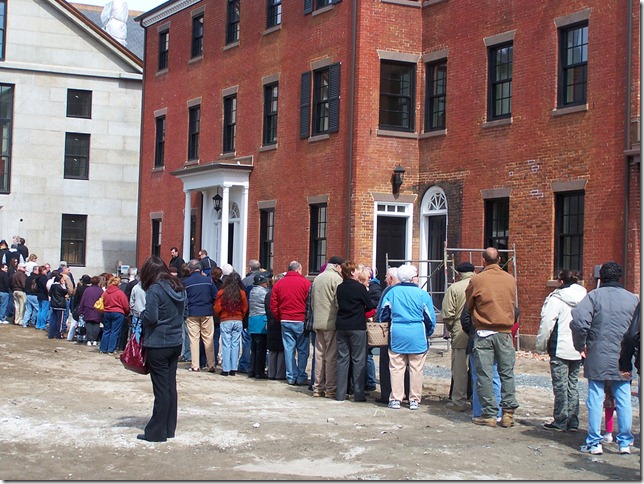
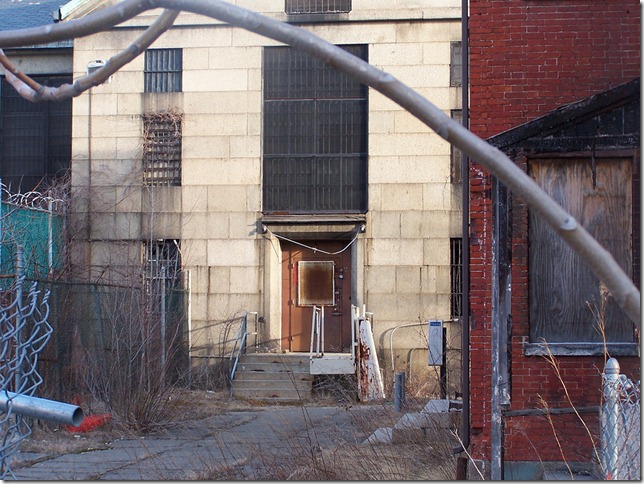
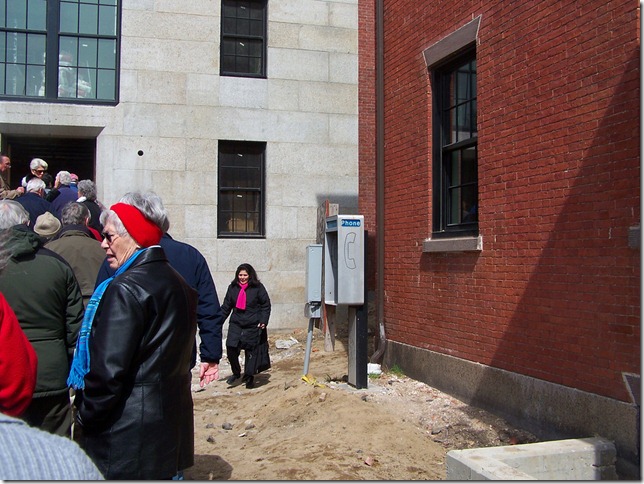
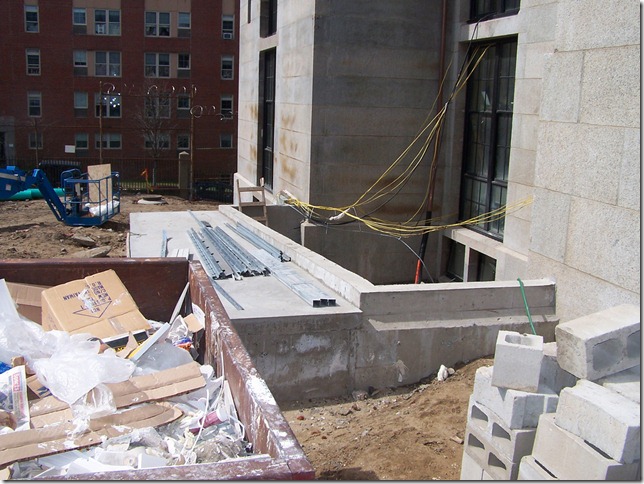
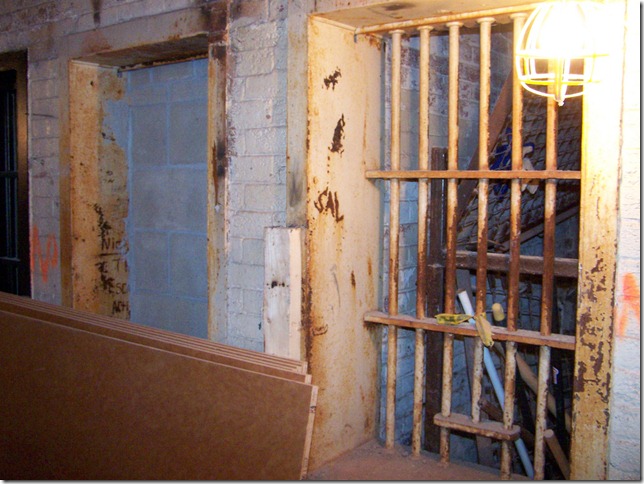
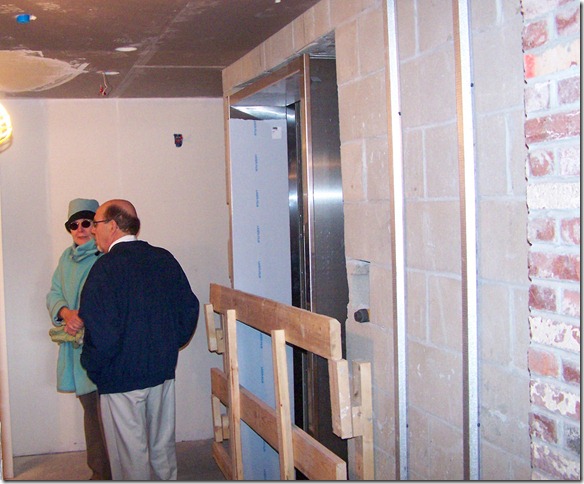
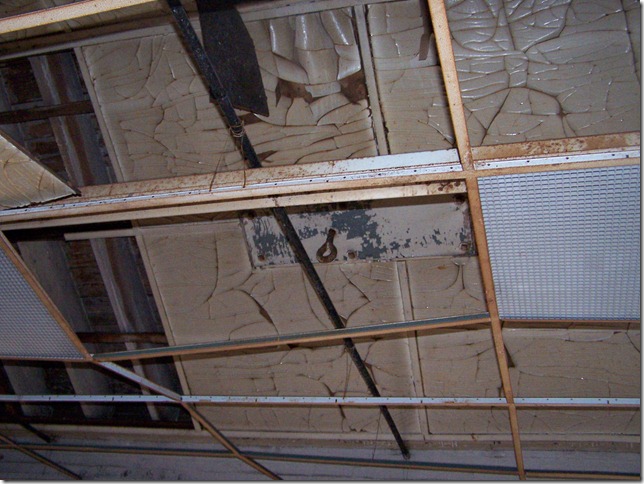
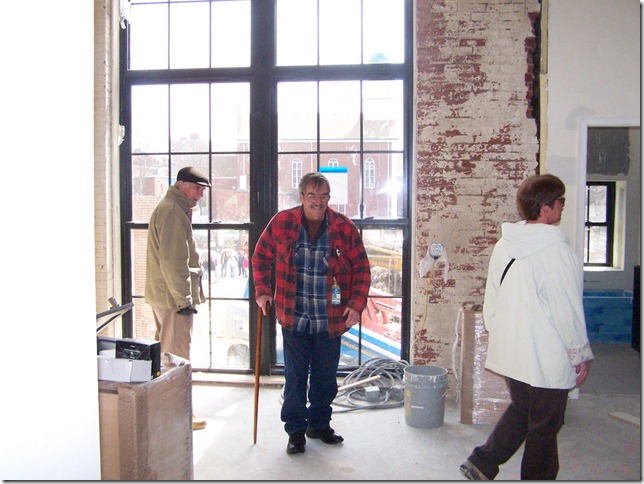



![4442489694_e0c9613976_b_d[1] 4442489694_e0c9613976_b_d[1]](http://lh5.ggpht.com/_A5kLRbZah0k/S6Ghg-gk9UI/AAAAAAAAAcg/t6Y__04t2nY/4442489694_e0c9613976_b_d%5B1%5D_thumb%5B1%5D.jpg?imgmax=800)
